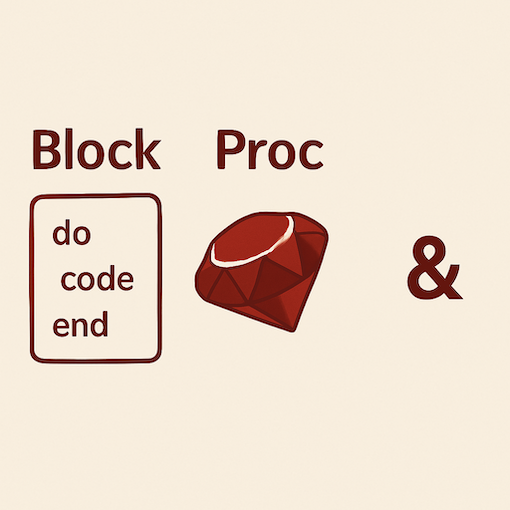Magical & in Ruby

What is & in Ruby…
Recently, I’ve been learning the Ruby programming language.
With my previous experience using Python, I originally thought it would be easy to get started,
but when actually using it, I still feel like it’s kinda different from Python.
There are many things in Ruby that Python doesn’t have,
and these things often make it difficult for me to make the transition.
Although Ruby might be more aligned with the object-oriented style,
my feeling is that it’s also more abstract at the same time.
So this post is very short, mainly to record the & symbol that is often encountered when using methods in Ruby,
which still makes me feel kinda abstract sometimes. 🥹
TL;DR
Some notes about & usage when using methods in Ruby.
A couple of different usage about &
1. 🤔
The first scenario is using & to defined parameter of a method.
Specifically means that the last parameter of a method is defined with &.
1 | def func(&p) |
In this scenario, Ruby would expect there is a block coming after the method call.
What it does is taking that block into the parameter list and converting it to a proc object
then assign to the parameter.
So We could examine like this:
1 | func {puts "Hi, I'm proc."} |
The general procedure
- Ruby sees there is a parameter defined with
&and expect a block. - While invoking the method , we put a block after it.
- Ruby then takes the block, converting it to a Proc object and assigning it to the prarmeter.
2. 🥴
The second scenario is like the opposite side of the first scenario.
While invoking a method with &xxx placing as the last argument like the below
1 | def func |
Notice that there is no parameter defined of the method.
We just called the method with the &p argument.
So Ruby will do the following 3 things:
- Ruby checks if
phas ato_procmethod. If it does, it will convert it to a proc object.
(if it’s already a proc, no conversion is needed). - After converting to a proc, it gets kicked out of the argument list and is then converted to a block.
- Finally, it’s used like a normal block.
So the above method called example is equivelant to this:
1 | func {puts "Hi, I'm proc"} |
Another common way is to use a symbol to call, because symbols have a to_proc method.
1 | def func(x) |
Ruby sees the :upcase symbol and invokes the to_proc method on it,
and then convert it a block.
1 | # &:upcase doing this action |
3. 🤯
The third scenario is bascially the different way of handling the first scenario.
And this one is not very straightforward for me.
We could also invoke like this
1 | def func(&p) |
Here is the diagram describe the process

That’s all I wanna share in this post ~
See ya ~ 👋